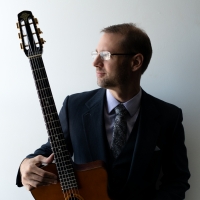DjangoBooks.com
Welcome to our Community!
Categories
- 20K All Categories
- 1.1K General
- 476 Welcome
- 59 Archtop Eddy's Corner
- 146 CD, DVD, and Concert Reviews
- 384 FAQ
- 26 Gypsy Jazz Italia
- 26 Photos
- 202 Gypsy Picking
- 21 Unaccompanied Django
- 15 Pearl Django Play-Along Vol.1
- 17 Gypsy Fire
- 45 Gypsy Rhythm
- 1.4K Gypsy Jazz University - Get Educated
- 130 Gypsy Jazz 101
- 224 Repertoire
- 218 History
- 707 Technique
- 51 Licks and Patterns
- 6 Daniel Givone Manouche Guitare Method Users Group
- 20 Eddie Lang Club
- 1.3K Gypsy Jazz Gear
- 800 Guitars, Strings, Picks, Amps, Pickups and Other Accessories
- 457 Classifieds
- 49 Recording
- 62 Other Instruments
- 18 Violin
- 5 Mandolin
- 22 Accordion
- 7 Bass
- 10 Woodwinds
- 346 Gypsy Jazz Events
- 142 North America
- 109 Europe
- 95 International
In this Discussion
Who's Online (0)
Stereo mix
 kungfumonk007
✭✭✭✭
kungfumonk007
✭✭✭✭
Where do you all prefer the instruments to be placed in the stereo field - both for the traditional quartets and trios with no fiddle.









Comments
Trio: bass at 12 o'clock, the guitars about 10 -11 a.m. left and 1 - 2 p.m. right.
Quartet: bass and main soloist both almost 12, maximum 11 left and 1 right; the other guitars 9 - 10 left and 2 -3 right.
(I didn't really think about this before, I tend to do my mixes intuitively. But when I recall the same or comparable (vocal and wind ensembles) mixing situations, I mostly seem to work as described. I think, it depends on the purpose. To demonstrate the sounds of different guitars, for example, I would separate the instruments as clear as possible; to create a "live"-feeling, I would pull them together more.)
To somewhat resemble a concert stage. I feel this is much easier task in genres that are recorded live and as an ensemble then pop and rock and all of the variants of those. In a former I think you simply aim to present the image of a live band on the stage to the listener. In a trio situation, if it's only one soloist, this instrument centered with the two accompanying instruments to the sides. In a quartet situation, with two soloists, those off to about the middle of each side with the bass mostly centered or just slightly to one side and rhythm guitar canvasing a little of both sides, or if the bass is off to one side then rhythm guitar on the opposite end.
Interestingly Willie and I have mostly the same approach. I wonder if we think alike or you simply can't go about it much differently?
I usually have bass down the middle, 2 rhythm guitars one spread to 9 oclock and one to 3 oclock, violin slightly to the right, accordian or whatever other instrument slightly to the left, lead guitar recorded in stereo and hard panned left and right.
My approach close to Willie's but sometimes I'll spread rhythm guitars further.
www.scoredog.tv
I think this and smilar approaches just generate somewhat "natural" impressions.
That's not surprising that you all favour the bass at noon. But I've been reading about putting the bass off to 10-11. Like a live situation. Bass players don't usually stand in the centre. But bass is frequencies are less directional.
I often do mono as well. If I'm trying to "keep it real".
Yes, bass frequencies spread in all directions, high frequencies more or less in one.
If you see the musicians playing (video or photo), the audio mix can follow the lineup as close as possible. If there is no picture, you can concentrate on the sound: voice(s), main soloing and bass in and around the center position (the stereo panning of the lead guitar is a fine solution too), and "the rest" surrounding.
For quartet I meant 2 guitar, fiddle and bass. @Scoredog so you hard pan rhythm left and righ and go for the center or just off center with the lead guitar? The fiddle would be off center the other side? I am away from home and a good set of speakers but can anyone give favorite recording examples?
guitar - bass - fiddle - guitar (or the other way round).